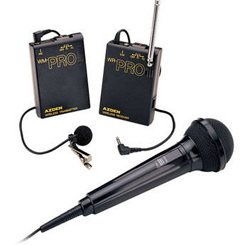Bad Voice-Overs Ruin Great Looking Videos

If I had to estimate what percentage of very professional-looking sales videos on the web were accompanied by crappy audio due to poor voice-over quality, I’d have to say at least 50 percent.
That’s a lot folks! And there is no reason for it – none at all. Audio for video is not hard. If your videos are just for fun, the narration quality may not be that important. But videos for your business affect the bottom line, and amateur-sounding audio might well be limiting how successful you are.
When someone goes through the trouble of creating a sales video they usually have a goal of – oh I don’t know – selling something. With that in mind, the wise salesperson will want to put forward as professional an image as possible within their budget.
One of the ways they do this is to produce a very nice-looking video with professional graphical design, and carefully crafted copy to tell the right story. Then, for the final touch, they decide to record the narration for this video in such a way that it sounds like they’re in a shower.
At least that’s my experience as a consumer of these videos (I watch a lot of them so I can learn what to do and, apparently, what not to do:P). I’m not certain what these folks are thinking, but a lot of them must feel like as long as it is intelligible and gets the message across, it’s fine. Uh, no.
When I see a great video with crappy voice over quality due to poor audio recording choices, in my mind the presentation can literally be down-graded from “pro” to “amateur.” Don’t you don’t think THAT affects sales?
The odd thing about this is the reason, typically, for the poor audio. It’s usually something silly like being too far away from the mic in a less-than-ideal acoustic space (which includes just about every room in most houses, by the way).
The fix is so easy. GET CLOSER TO THE MIC. The closer your mouth is to the mic, the more of you is recorded, and the less the room figures into the equation. I recommend 3-4 inches if possible. You can go the extra mile and hang a moving blanket behind the microphone, but for the most part just getting closer to the mic will make a huge difference.
Now when you are recording video, especially if you’re doing a “talking head” type of video, logistics dictate that your mouth (or that of the person talking) will be a few feet away from the camera. You have a couple of choices. If your camera has an external mic jack, use it! That way you put a mic close to the narrator’s mouth. You can also use a lavalier type mic like the Azden WMS-Pro for this. (The Azden also comes with a hand-held mic).
I did a review video of the Azden, comparing the sound of just the camera’s mic with that of the lav, in this post: Audio For Videos: Do Not Let Bad Sound Ruin Great Video.
If your camera does not have an external mic connector, the other alternative is to record the voice totally separate from the camera. The will be recorded either into a computer or a mobile recorder like the Zoom H4 Handy 4-Track Recorder (which can double as a computer audio interface – very cool!).
Then just load up the video in your editor (I’m a fan of Magix Vegas), which will also load the audio recorded on the camera’s built-in mic. That’s fine.
Simply import the voice audio you recorded separately and place it on a new audio track underneath the one you loaded from the camera. Now you can just line up the two audio tracks by nudging the audio-only track, delete the audio track that got recorded from the camera, and presto! Pro audio instead of the cruddy camera-recorded sound.
Several of the above tips won’t require you to buy anything! A common misconception is that pro audio can only come from great big microphones costing hundreds (or thousands) of dollars. That is not true.
It’s more about the knowledge of acoustics and microphones and recording than it is about the gear. For video narration purposes you can get perfectly professional quality audio with a USB mic (like the Samson Q2U) costing around $59, as long as you have just the barest bit of audio knowledge, which you can get from many tutorials and articles at Home Brew Audio.

